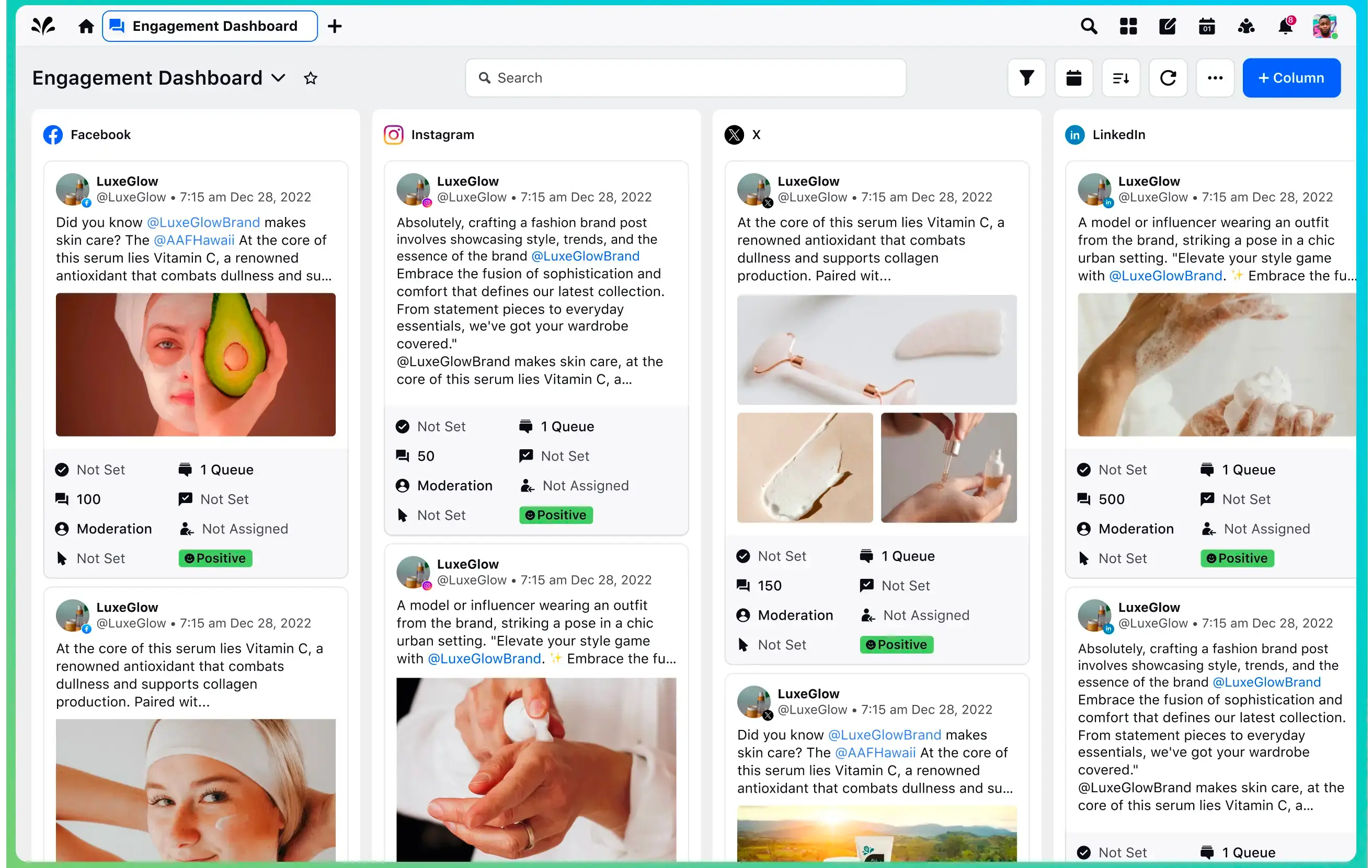The undisputed leader in social media management
For over a decade, the world’s largest enterprises have trusted Sprinklr Social for its in-depth listening, unmatched channel coverage, enterprise-grade configurability and industry-defining AI.

Campanhas nas mídias sociais: o que são e para que servem
Campanhas nas mídias sociais são um conjunto de ações que têm por objetivo anunciar e promover produtos, eventos ou ideias em canais de relacionamento on-line. “[Elas são] a parte ‘ativa’ das mídias sociais, quando se ‘fala’. As pessoas são procuradas e estimuladas a participar e divulgar algo (normalmente, vinculado a campanhas publicitárias ou a lançamentos de produtos)”, definem Diego Monteiro e Ricardo Azarite no livro “Monitoramento e métricas: do estagiário ao CEO”, idealizado pelo Scup.
De acordo com os autores, as campanhas nas mídias sociais podem ter dois objetivos. Primeiro, gerar comunidade, ou seja, aumentar o número de pessoas que estão conectadas à marca nas mídias sociais. Segundo, divulgar algo pontual, como o lançamento de um produto ou serviço. Eles explicam que empresas com um nível de maturidade menor nas mídias sociais tendem a usar as campanhas pelo modelo mental da mídia tradicional, ou seja, não há interação.
Num segundo nível, a campanha serve como motivação para o começo de uma conversa nas mídias sociais. Já em empresas num nível de maturidade mais desenvolvido, a campanha envolve a empresa inteira, o que traz mais relevância e possibilidades de interação. As ações realizadas nas mídias sociais são pautadas por um conceito maior que pode ser desdobrado em diversas iniciativas no decorrer da campanha. Elas são sincrônicas cronologicamente e costumam seguir uma identidade visual que facilitará a identificação da campanha pelo usuário.
Cada mídia social é regida por “regras” de uso próprias. Isso leva a uma infinidade de possibilidades de campanhas.
Recentemente, o Ministério da Fazenda publicou uma nova portaria que endurece as regras que regem promoções e concursos. O assunto continua dando o que falar no mundo das mídias sociais. Para ajudar, a BRR Business and Rights Resolutions elaborou um infográfico esclarecendo diversos pontos importantes para quem quer fazer seu trabalho sem se meter em confusão. Confira o material com as novas regras aqui.
Quais são alguns exemplos de campanhas que você curtiu nas mídias sociais?
FONTE: Texto extraído do ebook “Primeiros passos para fazer campanhas nas mídias sociais”.



